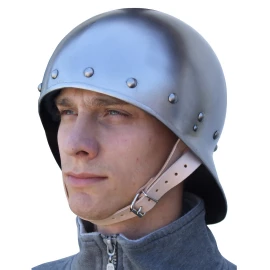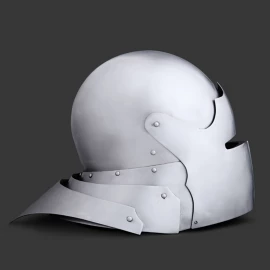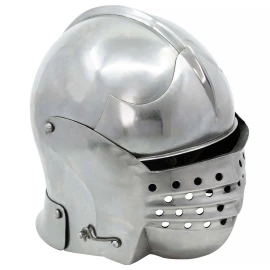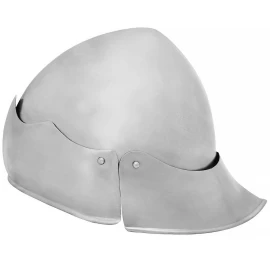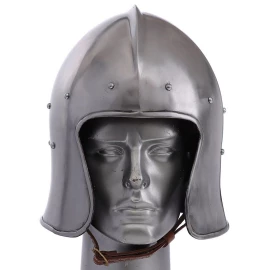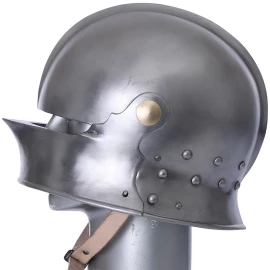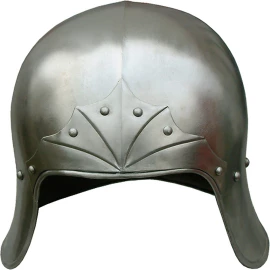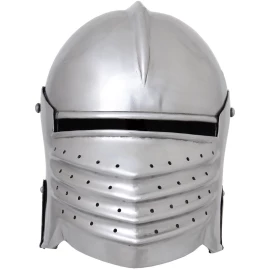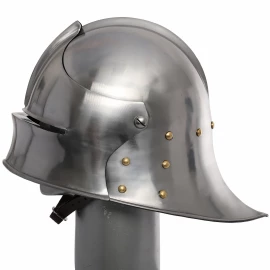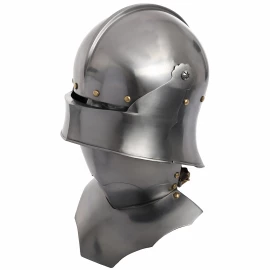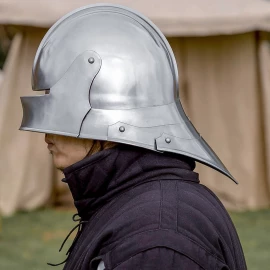Sallets
The sallet was a war helmet that replaced the bascinet in northern Europe and Hungary during the mid-15th century. Some sallets were close fitting except at the back of the head where they extended and formed a pointed tail. Some Italian ones followed the shape of the neck, and had an additional plate riveted on. Many sallets were worn with an extended, padded gorget called a bevor that protected the wearer's jaw. Some sallet versions have occularia in the form of a slit in a visor, some have this slit in the front of the helm, or even in the brim. Most sallets needed no breathing holes, as there was a natural gap where it overlapped the bevor near the wearer's mouth. Some Italian sallets had a "bellows visor" with breaths cut into the visor.
Filter products
Find exactly the items that suit you.
11 items out of 41 found.
Sallet
This helmet design contrasted with the barbute which was popular in Italy at the same time. Unlike the sallet, the barbute itself protected the jaw and neck. So whereas the gorget or bevor were important counterparts to the sallet, they were usually absent in barbutes. Barbutes did not pivot. Sallets did not share the barbute's resemblance to classical Greek or Roman artifacts.
One characteristic that distinguishes early sallets from late sallets is the length of the helmet tail, which became more pronounced toward the end of the century. Some helmets are of intermediate design, incorporating elements of both the barbute and the sallet. In the early 16th century this evolved into the burgonet.

